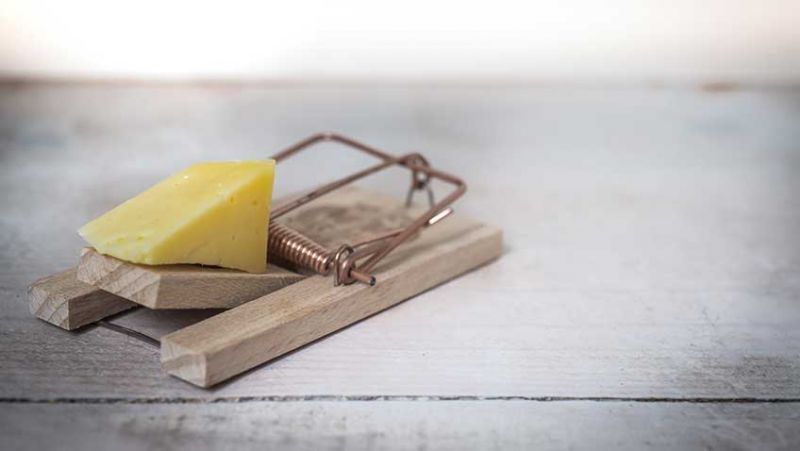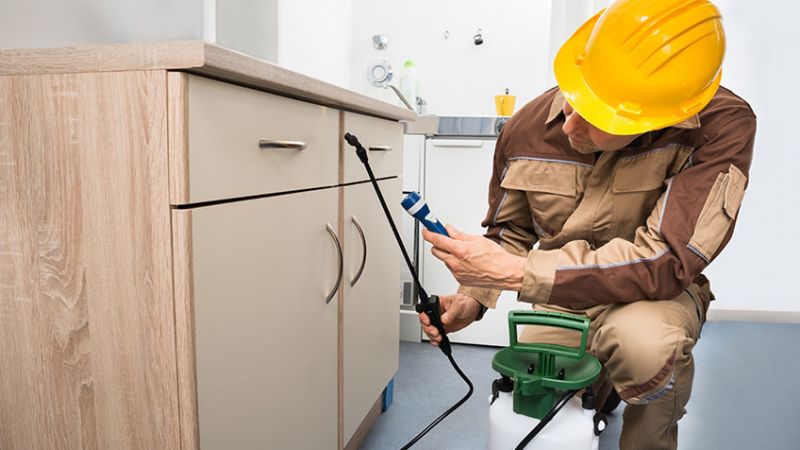
When it comes to maintaining a healthy and safe home environment, understanding common pests is crucial. The UK is host to a diverse array of pests that can invade our living spaces, leading to potential damage and posing various health risks to residents. Whether it’s rodents, insects, or other unwanted visitors, being informed is your first line of defence. In this comprehensive guide, we will delve into the top 10 common pests found in the UK, provide tips on how to identify them and share effective methods for prevention and control, ensuring you can protect your home and family.
1. Ants
Ants are social insects that thrive in a variety of environments, including gardens, parks, and homes. They are well-known for their industrious nature and are often seen foraging for food, particularly sugary substances that attract them. Their ability to form colonies allows them to work cooperatively, making them a common sight in many households.
Identification
- Size: Ants can vary significantly in size, ranging from 2 to 25 mm, depending on the species.
- Color: Most common species are typically black or brown, though some may exhibit red or yellow hues.
- Body: They possess a segmented body with a notable narrow waist, which distinguishes them from other insects.
- Behavior: Ants are generally observed moving in trails, especially near food sources, as they communicate and leave pheromone trails to guide others in their colony.
2. Cockroaches
Cockroaches are notorious pests known for their resilience and ability to thrive in a variety of conditions. They are commonly found in kitchens and bathrooms, where they seek out food and moisture. Their presence can be unsettling, and they are often associated with unsanitary conditions.
Identification
- Size: Adult cockroaches typically measure between 10 to 30 mm in length, depending on the species.
- Color: Their colouration can vary from reddish-brown to black, with some species displaying distinct patterns.
- Body: Cockroaches have a flat, oval-shaped body, accompanied by long, slender antennae that help them navigate their environment.
- Behavior: These pests are nocturnal, preferring to remain hidden during the day. They often scurry away rapidly when lights are turned on, which can be alarming when encountered.
3. Bed Bugs
Bed bugs are small, parasitic insects known for their ability to feed on human blood, often during the night while their hosts are asleep. These pests are remarkably adept at hiding, making them difficult to detect until an infestation occurs. They are commonly found in bedding, furniture, and clothing, where they can easily access their food source.
Identification
- Size: Bed bugs typically measure between 4 to 5 mm in length, roughly the size of an apple seed.
- Color: They are recognizable by their reddish-brown colour, which can darken after a feeding when they are engorged with blood.
- Body: Their bodies are flat and oval-shaped, allowing them to squeeze into tiny crevices and seams.
- Signs: Common signs of a bed bug infestation include the presence of small blood stains on sheets, as well as dark spots of excrement that resemble pepper. These signs can often be found on bedding, mattresses, and nearby furniture.
4. Mice
Mice are common household pests that can cause significant damage to property while also posing health risks through contamination. Their ability to reproduce quickly can lead to large infestations, making it essential to address any signs of their presence promptly.
Identification
- Size: Mice typically measure between 7 to 10 cm in length, excluding the tail, which can be equally long.
- Color: They commonly exhibit a brown or grey coloration, often with lighter underbellies that may be whitish or cream-colored.
- Body: Mice have small, compact bodies characterized by a pointed snout and large, round ears, which enhance their hearing abilities.
- Signs: To identify a mouse infestation, look for droppings, which are small and dark; gnaw marks on food packaging or furniture, and nests made of shredded materials such as paper, fabric, or insulation, often hidden in secluded areas.
5. Rats
Rats are significantly larger than mice and are known for their destructive tendencies. Their ability to gnaw through various materials makes them especially problematic for homeowners. Commonly found in urban areas, rats can enter homes through surprisingly small openings, posing risks to both property and health.
Identification
- Size: Adult rats typically measure between 20 to 25 cm in length, excluding the tail, which can add another length of about the same measure.
- Color: They are usually brown or grey, with some species exhibiting variations in coloration.
- Body: Rats have a thick, robust body with a blunt snout and a long, scaly tail that is often shorter than their body length.
- Signs: Signs of a rat infestation include dark, rod-shaped droppings, burrows in or around the home, and gnaw marks on walls, food packaging, or woodwork. Their presence may also lead to noticeable scratching sounds at night as they forage.
6. Wasps
Wasps can be a significant nuisance, particularly during the warm summer months when outdoor gatherings become more common. These insects are frequently found near food sources and can become aggressive if they feel threatened, making it essential to be cautious around them.
Identification
- Size: Wasps typically measure between 10 to 25 mm in length, depending on the species.
- Color: They are easily recognizable by their striking yellow and black striped body, which serves as a warning to potential threats.
- Body: Wasps possess a slim body with a distinctively narrow waist, setting them apart from bees, which are generally more robust.
- Behavior: You will often see wasps hovering around food and drink outdoors, particularly sweet or protein-rich items. They are attracted by picnic spreads and open trash containers, increasing the likelihood of encounters during outdoor activities.
7. Flies
Flies are ubiquitous pests known for their potential to contaminate food and spread various diseases. Their presence is particularly noted in kitchens, dining areas, and waste disposal sites, where they can create significant hygiene concerns.
Identification
- Size: Flies typically measure between 6 to 12 mm in length, though size may vary depending on the species.
- Color: Their coloration can vary widely; however, common house flies are generally grey with distinctive black stripes on their thorax.
- Body: Flies have a round body accompanied by large, prominent eyes that allow for a wide field of vision, contributing to their quick reactions.
- Behavior: They are strongly attracted to food, particularly sweet substances, as well as waste and decaying organic matter. This attraction often leads them to hover around exposed food items, making vigilance essential during food preparation and consumption.
8. Silverfish
Silverfish are small, wingless insects that thrive in damp, humid environments, making them a common nuisance in households. They are frequently found in areas such as bathrooms, basements, and kitchens, where moisture levels are higher.
Identification
- Size: Adult silverfish typically range from 12 to 19 mm in length.
- Color: They are easily identified by their shiny silver or grey coloration, which gives them a distinctive appearance.
- Body: Silverfish have a flat, elongated body with a unique fish-like appearance, characterized by their long antennae and three long bristles at the rear.
- Behavior: These insects are nocturnal, preferring to hide during the day. You may often catch a glimpse of them scurrying away when disturbed, especially in dark, undisturbed areas of your home.
9. Fleas
Fleas are small, agile insects known for their ability to jump long distances and for their blood-sucking habits. They primarily feed on the blood of mammals and birds, and they are commonly introduced into homes through pets such as dogs and cats, making effective control essential.
Identification
- Size: Adult fleas typically measure between 1 to 3 mm in length, making them quite small and often difficult to spot.
- Color: They are generally dark brown to black, which can help them blend into fur or carpets, making detection challenging.
- Body: Fleas have a flat, oval-shaped body that facilitates their movement through fur or feathered coats, complemented by long hind legs that enable them to jump great distances.
- Signs: Common signs of a flea infestation include itchy bites on the skin, often appearing in clusters, and the presence of "flea dirt," which consists of small black specks resembling pepper that are actually flea feces. Checking pets for these signs can provide early indicators of an infestation.
10. Termites
Termites are notorious wood-destroying insects that can cause significant structural damage to homes if left unchecked. These pests thrive in damp environments where wood is readily available, making them a serious concern for homeowners, especially in areas with high moisture levels.
Identification
- Size: Termite sizes can vary, ranging from 4 to 15 mm long, depending on the species.
- Color: They are generally light brown to white, which can make them less visible against wood backgrounds.
- Body: Termites have soft bodies characterized by straight antennae and a broad waist, setting them apart from ants, which have a more constricted waist.
- Signs: Signs of a termite infestation include the presence of mud tubes along walls or foundations, damaged wood that may have a honeycomb appearance, and discarded wings, often found near windows or doors after swarming events.
Identifying and understanding common pests in the UK is essential for effective pest control. By recognizing the signs of an infestation early, you can take proactive measures to protect your home and health. If you encounter a pest problem that seems overwhelming, consider contacting a professional pest control service for assistance.
Prevention Tips
To maintain a pest-free home, implementing effective prevention strategies is essential. Here are some valuable tips to help keep unwanted pests at bay:
- Seal Cracks and Crevices: Inspect your walls, foundations, and entry points for any cracks or gaps, and seal them with caulk or other appropriate materials. This can prevent pests from entering your home through small openings.
- Store Food Properly: Keep food stored in airtight containers to eliminate sources of attraction for pests. Be mindful of pet food as well, ensuring it is also securely stored when not in use.
- Regularly Clean and Declutter: Maintain a clean home by regularly cleaning surfaces and decluttering areas where pests may hide. Pay special attention to kitchens, dining areas, and storage spaces.
- Maintain a Dry Environment: Pests are attracted to moisture, so it's essential to fix leaks and use dehumidifiers in damp areas. Keeping your home dry can significantly reduce the likelihood of pest infestations.
- Inspect and Maintain Your Garden: Regularly inspect your garden and landscaping to reduce outdoor pest habitats. Trim overgrown plants, remove debris, and ensure proper drainage to deter pests from creating nests close to your home.
When to Call a Professional
If you notice signs of a significant pest infestation or if your DIY methods prove ineffective, it may be time to seek the assistance of pest control professionals. Recognising the right moment to call in experts can save you time, effort, and potential damage to your home. Pest control specialists offer targeted treatments and strategies tailored to your specific situation, ensuring a thorough and effective resolution. Here are some signs that indicate it’s wise to enlist professional help:
- Persistent Infestations: If you consistently see pests despite your efforts to eliminate them, professional-grade treatments may be necessary.
- Widespread Problems: Large infestations that affect multiple areas of your home often require a comprehensive approach that only experts can provide.
- Health Concerns: If your pests are known to carry diseases or pose health risks, it’s critical to address the matter promptly with professional intervention.
- Damage to Property: Signs of structural damage caused by pests, like termites or rodents, should be evaluated and resolved by professionals to prevent further harm.
- Uncertainty About Identification: If you're unsure of the type of pest or the extent of the problem, pest control experts can conduct thorough inspections and identify effective treatments.


